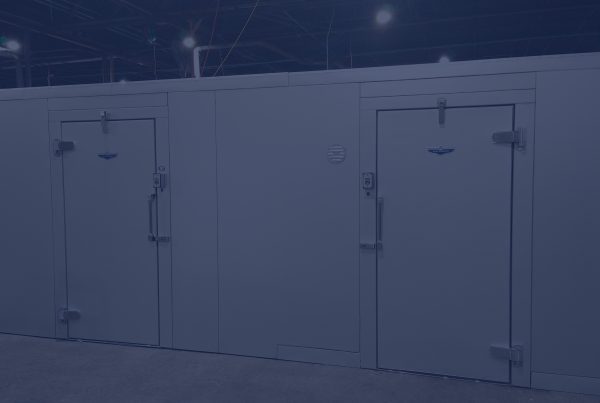
Modular panels are equipped with cam locks and double barrel panel gaskets.
Air infiltration, or lack thereof, plays a major role in an efficient walk-in cooler or freezer. Walk-ins are manufactured to be air-tight because any cold air that escapes will lower efficiency and any warm air that enters can cause condensation and icing problems. Air and moisture infiltration can damage panel insulation, causing it to lose R-value and reduce the life of the walk-in. It seems like a walk-in constructed of numerous separate panels would be prone to air leakage, but this isn’t the case. So how do manufacturers of walk-ins create an airtight seal between panels?
Manufactures have different methods of sealing panels, but at U.S. Cooler, we use precision-cut tongue & groove insulation between two metal skins (of galvalume or stainless steel), cam locks and panel gaskets. The interlocking design of our panels ensure they fit together like puzzle pieces and are held tightly in place by aligning and tightening cam lock mechanisms. Double-barrel compression gaskets line the inside and outside of each panel. When the panels are locked into place with a cam wrench, the gaskets seal against each other and create an air and moisture barrier. Walk-in coolers without an insulated floor are inserted into a vinyl channel (screed) to prevent air from entering when mounted on concrete.
Even with these features it’s possible to have air infiltration if the walk-in has not been properly installed or has damaged panels. It’s a good practice (but not absolutely necessary) to caulk all the joints inside the walk-in with NSF approved silicone caulk. This can give you peace of mind that the walk-in panels are sealed and the gaskets are protected. Also make sure all your cam locks are fully tightened for a good seal and that no panel gaskets are punctured.




